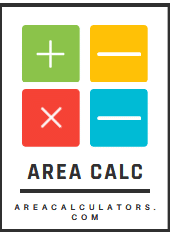Welcome to the 80/20 Deflection Calculator! This tool is designed to help you calculate the deflection of a beam under a load based on the 80/20 rule. Whether you’re an engineer, architect, or DIY enthusiast, understanding beam deflection is crucial for ensuring the structural integrity of your projects.
Formula & Variables
The formula used in the 80/20 Deflection Calculator is as follows:
Here’s a breakdown of the variables:
- : Deflection of the beam (inches)
- : Load applied to the beam (pounds)
- : Length of the beam (inches)
- : Modulus of elasticity of the material (psi)
- : Moment of inertia of the beam’s cross-section (in^4)
Practical Uses
Engineering and Construction
Engineers and architects use deflection calculations to ensure that beams and structures can withstand the loads they will experience in real-world conditions. By understanding how much a beam will deflect under a given load, they can design structures that are safe and durable.
DIY Projects
For DIY enthusiasts working on home improvement projects or building furniture, knowing the deflection of beams is essential for ensuring the stability and safety of their creations. This calculator provides a simple way to estimate beam deflection without the need for complex mathematical calculations.
Importance & Benefits
Safety
Calculating beam deflection helps ensure the safety of structures by preventing excessive sagging or bending under load. By understanding how much a beam will deflect, engineers and builders can design structures that meet safety standards and regulatory requirements.
Precision
Using the 80/20 Deflection Calculator allows for precise calculations of beam deflection, providing accurate estimates that can guide design decisions and construction practices. This precision helps avoid over-engineering or underestimating the structural requirements of a project.
Conclusion
The 80/20 Deflection Calculator is a valuable tool for engineers, architects, and DIY enthusiasts alike. By providing a simple and efficient way to calculate beam deflection, it empowers users to design and build structures that are safe, reliable, and structurally sound.
FAQs
Q: What is the 80/20 rule?
A: The 80/20 rule, also known as the Pareto Principle, states that roughly 80% of the effects come from 20% of the causes. In the context of beam deflection, it suggests that a relatively small percentage of the variables (such as load and beam length) can account for a large percentage of the deflection.
Q: How accurate are the calculations?
A: The calculations provided by the 80/20 Deflection Calculator are based on standard engineering principles and assumptions. While they can provide accurate estimates, it’s essential to consider other factors such as material properties, beam design, and real-world conditions for precise engineering analysis.
Q: Can I use this calculator for different materials and beam shapes?
A: Yes, the formula used in the calculator is applicable to a wide range of materials and beam shapes. However, it’s essential to ensure that the input values for material properties and beam dimensions are accurate for the specific application
